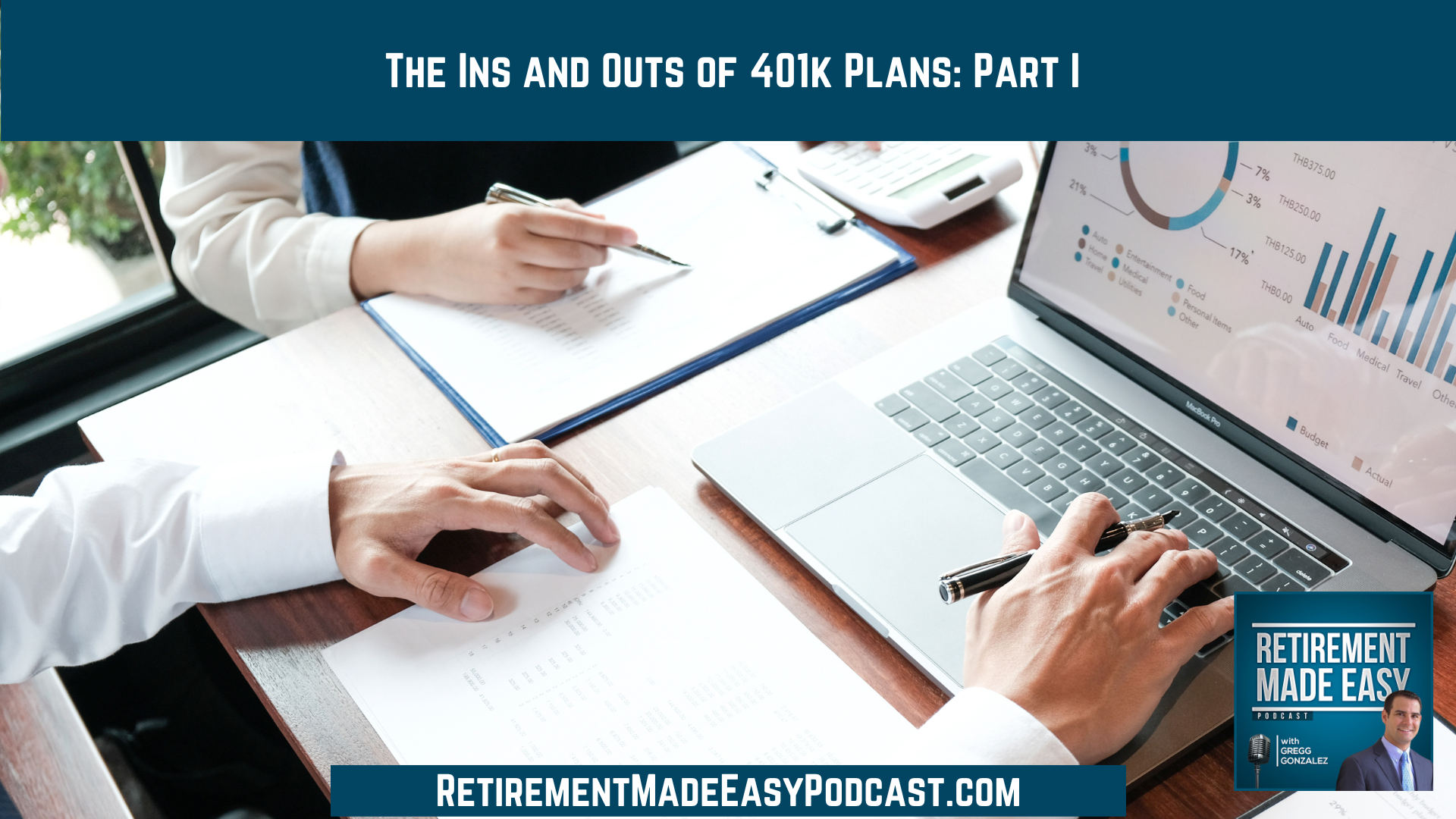
Everyone is likely familiar with 401k plans and many people have them through an employer. But do you know anything beyond the very basics? Does your company offer a match (and do you know how it works)? Do you know how much your plan costs or what your balance is? In this episode of Retirement Made Easy, I’m going to start covering some of the ins and outs of 401k plans. My hope is that you’ll gain a better understanding of something so important to a successful retirement.
You will want to hear this episode if you are interested in…
- [0:35] Send me questions and ideas for future episodes!
- [4:35] The employer gets to determine 401k matching
- [9:44] The average 401k balance by age
- [12:14] Types of investment options in 401k plans
- [17:13] Why you shouldn’t pull your money out of the market
- [19:18] The advantages of Roth 401ks/traditional 401ks
- [23:33] Consolidating or rolling over old 401k plans
Does your employer offer a 401k match?
Employers get to determine whether or not they’ll do a 401k match. The best match I’ve seen is Microsoft’s, which matches dollar-for-dollar up to the annual contribution limit. So if you’re over 50 and work for Microsoft, you can contribute $30,000 and they will match it. I have other clients who get no match whatsoever. Some get $500–$1,000 a year alongside discretionary profit sharing.
Boeing froze their pension plan a number of years ago (It’s the largest under-funded pension plan in the country). But their non-union employees get a dollar-for-dollar 401k match, up to 10% of their earnings. Other companies have non-matching 401k contributions (they put money in whether you do or not). There are even tiered matching plans (which can be confusing).
Many people have Roth 401k plans but many others aren’t given the option. That should have changed a long time ago. Every company should be able to offer a Roth 401k.
The average 401k balance by age
The average account balance in 2021 for ages 55–64 was $256,244. The median 401k account balance for ages 55–64 was only $89,716. That tells us that the average is impacted by the outliers (those with millions versus nothing). The median is smack in the middle. That’s not good at all. If they ran this study again today, I think it would be less than $89,000. It shows us that Americans have under-saved for retirement and unless something drastic changes, they may run out of money.
Types of investment options in 401k plans
When choosing the companies to invest in, people used to only look at the first couple of investments and wouldn’t move through the whole list. So investment companies would change the name of their funds to get to the top of the alphabetical list. Now the default is a retirement date fund based on your age. They just plug your age into a formula and choose how to weight your investments based on when you’ll retire.
Most people think that the 401k company is managing their investments for them. But in actuality, participants are responsible for selecting the investments in their portfolio. That being said, the administrators of the plan have a fiduciary responsibility to offer you a wide range of investment options, for both riskier and conservative investors. They also review the funds to make sure they’re still a fit for the 401k plan.
I’m reviewing a 401k plan for someone who has been invested in a fund that hasn’t made any money in 10 years. There’s no time period you can look at with this fund that you would have made money.
What are some of the advantages and disadvantages of 401ks? What do I wish could be changed? Listen to learn more about 401k plans.
Resources & People Mentioned
Connect With Gregg Gonzalez
- Email at: Gregg@RetireSTL.com
- Podcast: https://RetirementMadeEasyPodcast.com
- Website: https://StLouisFinancialAdvisor.com
- Follow Gregg on LinkedIn
- Follow Gregg on Facebook
- Follow Gregg on YouTube



